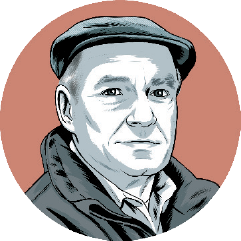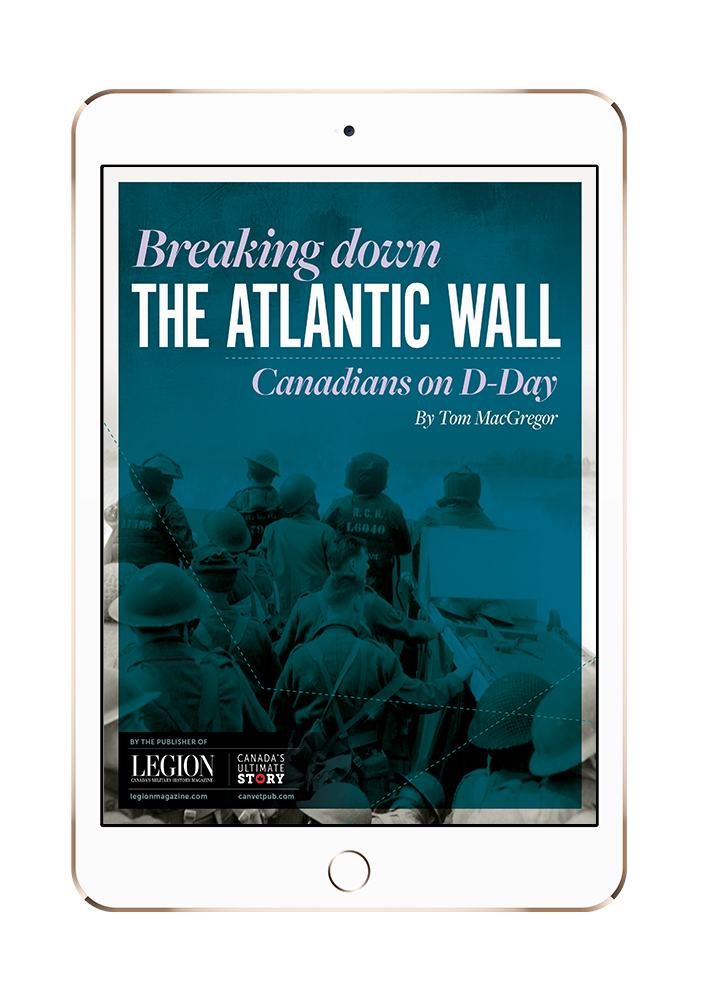![Fireworks help launch Quebec City’s 400th anniversary on New Year’s Eve. [PHOTO: STEVE DESCHENES]](https://legionmagazine.com/wp-content/uploads/2008/04/quebeclead.jpg)
Residents of Quebec City went to the polls in a byelection late last year to choose a successor to Andrée P. Boucher, the popular and effective mayor who died in late August. Fifteen candidates ran and the voters chose Régis Labeaume, a 51-year-old businessman and political novice who started the campaign at three per cent in public opinion surveys, but finished with 59 per cent of the vote. Labeaume ran on a platform of making Quebec City a recognized centre of excellence for advanced research and scientific innovation. But the new mayor says he has not devoted much of his first year in office to that project. Instead, he has had his hands more than full presiding over the biggest birthday party on the continent.
Quebec City officially turns 400 on July 3, 2008—four centuries after an intrepid French explorer and adventurer named Samuel de Champlain came ashore with about 30 other Frenchmen, including labourers, carpenters and stonemasons, among others, at a place along the St. Lawrence River that the native inhabitants called kebec, which is said to mean “where the river narrows.” They constructed a very modest habitation of three, two-storey buildings, surrounded by a moat and palisades, thereby establishing a French presence that endures today.
![The Quebec Winter Carnival’s Bonhomme shares the spotlight. [.]](https://legionmagazine.com/wp-content/uploads/2008/04/quebecinset2.jpg)
That makes Quebec City one of the oldest, continuously inhabited communities on the continent. St. Augustine, Fla., born as a Spanish settlement in 1565, is said to be the oldest. In 2007, Americans celebrated the 400th anniversary of the creation of Jamestown, in the contemporary state of Virginia, the first English colony in North America. It had disappeared by 1750 and the site is today partially submerged. Residents of Santa Fe, New Mexico, are also gearing up for the 400th anniversary of their city, founded by the Spanish in 1610.
But, according to some writers, the French explorer’s audacious enterprise gave birth to more than just one community. “The third day of July 1608, when Champlain stepped ashore at Quebec and unfurled the fleur-de-lis, marks the birth of that city and province, and indeed of Canada as a nation,” his biographer Samuel Eliot Morse wrote. That is an apt description of Champlain’s achievement, according to Philippe Couillard, the minister of health and social services in Jean Charest’s Liberal government, and the minister responsible for the Quebec City region. “These celebrations are very important for the city and for Canada,” says Couillard, an 11th-generation Quebecer whose first ancestor arrived in the tiny settlement in 1613. “This is part of the history of the whole country. This is where the historic duality of Canada began.”
It isn’t every year that one city and its citizens have cause to celebrate such auspicious events, and the residents of Quebec’s capital, along with visitors from the rest of Canada, the United States and around the globe, will be celebrating in grand style. “It’s going to be a big party,” Labeaume said a few days after taking office. “It’s going to be amazing. During the campaign, I didn’t think about the 400th. When I took over, I discovered I had to work on it.”
He didn’t have a whole lot of time to study the file and prepare himself. The $85-million celebration—funded by $40 million from Ottawa, $40 million from the provincial government and the balance from municipal coffers—began on New Year’s Eve with an outdoor concert at Place d’Youville, a civic square outside the imposing, stone walls of the old city, which was built in the 17th and 18th centuries on bluffs overlooking the spit of land where the original settlement stood.
The opening night celebration didn’t go exactly as planned. The crowd—official estimates of its size are hard to come by—was twice as large as expected. Most people couldn’t get near the stage and the video monitors were too small. Nevertheless, Quebecers demonstrated by their enthusiasm that they were ready to celebrate.
The Société du 400e anniversaire de Québec, the organization responsible for overseeing the entire event, plans to hold hundreds of events. The closing ceremony is scheduled for New Year’s Eve. Activities will include appearances by Céline Dion and Cirque du Soleil, as well as an exhibition of works from the Louvre in Paris and political events that will bring Prime Minister Stephen Harper and French President Nicolas Sarkozy to the city. A complete listing of events is available at the website: http://monquebec2008.sympatico.msn.ca
Organizers anticipated that Quebec’s 400th would bring 5.5 million visitors to a city with a population of just 500,000, but residents are accustomed to such inundations of outsiders. Tourism has long been a major industry in the provincial capital, second in importance only to government and public administration, thanks to the city’s spectacular riverside location, the surrounding mountains and, of course, its wealth—unparalleled in North America—of beautifully preserved heritage buildings, some dating from the early 1600s. But tourism has risen to new levels since December 1985 when the UNESCO World Heritage Committee added the Historic District of Old Quebec to its register of historic places of worldwide importance.
Last year, 4.8 million people paid a visit, according to Richard Séguin, a spokesperson for the government agency Quebec City Tourism. The majority—3.2 million—were from within the province. Another 500,000 came from the rest of Canada, 550,000 were from the U.S. and the balance from places outside North America. Most of the international visitors come from France, Great Britain, Germany and Italy, but Japanese and Koreans have become a bigger presence and, more recently, Mexicans, says Séguin. He adds that the city is able to accommodate so many people due to a hospitality industry that boasts 12,000 rooms in hotels, motels, bed and breakfasts, and other venues. For information on accommodations, restaurants and other services, check the website www.quebecregion.com,
Planning for the extravaganza began in the year 2000, says Lucie Latulippe, senior director of national and international affairs with the Société du 400e, when then mayor Jean-Paul L’Allier asked the director of Quebec’s Museum of Civilization to draw up a template for a celebration. The Société du 400e, which has about 75 employees, has put together a roster of about 130 events, a handful of them involving some of Quebec’s most celebrated homegrown talent.
These include the Céline Dion concert, a free outdoor show that will be held Aug. 22 on the Plains of Abraham, just beyond the walls of the old city where on a September day in 1759 General James Wolfe and his British regulars defeated the French general, Louis-Joseph Montcalm, and his forces, which included troops from France, militias from Quebec and their aboriginal allies. The one-time battlefield, site of the British Conquest of New France and a decisive moment in Canada’s past, is now a National Historic Site and a lovely, rolling urban park several hundred feet above the St. Lawrence. Dion’s appearance, the first in her native province in several years, is expected to attract a crowd of 80,000 to 100,000. The concert is scheduled for Aug. 22.
The Société du 400e has commissioned two other major works that may well be remembered and discussed long after the celebrations end. The first is the Image Mill, a creation of Robert Lepage, a director, actor, playwright, producer and Quebec City’s resident artistic genius. The 40-minute production will be shown nightly after sunset from June 20 to July 29. It will feature images depicting the city’s long and colourful history as a base for the coureurs de bois who penetrated aboriginal lands to trade and explore; as a major North American port that saw cargo vessels departing for Europe loaded with Canadian lumber and ships arriving from Europe crammed with immigrants; as a military city where battles were fought and where Canadian soldiers converged en route to Europe and combat in two world wars.
Lepage’s images will be projected onto the huge grain elevators in the city’s port, which will become a giant screen some 600 metres long and 60 high. It will be visible from many kilometres away.
The other piece is a show celebrating francophone diversity and created by Cirque du Soleil, which began its life in the early 1980s in Baie Saint-Paul, 90 kilometres east of Quebec City, and is now an international entertainment conglomerate with travelling shows and permanent venues in Las Vegas and at Disney World in Orlando, Fla. Latulippe says the original plans called for one performance only, Oct. 19 at Le Colisée, but earlier this year the organization was negotiating with Cirque to add more showings.
Apart from the big spectacles, the bulk of the 130 odd events will be grassroots productions showcasing the breadth and depth of the creative talent available in Quebec, Latulippe says the Société du 400e enlisted the organizers of three celebrated annual events, the Quebec Winter Carnival, the Summer Festival and the Festival of New France, to contribute to the celebration. The society has also reached out to cultural institutions and historical societies. “We asked these organizations to develop special projects and we have given them financial support,” explains Latulippe. “We think there will be something for every sector of the population. There are sporting competitions, outdoor activities, family events, cultural acts and historical recreations.”
![L’Espace 400 will feature outdoor as well as indoor festivities while the huge grain elevators in the city’s port will be transformed into a giant screen known as the Image Mill. [.]](https://legionmagazine.com/wp-content/uploads/2008/04/quebecinset.jpg)
The heart of the festivities will be at L’Espace 400 on the waterfront adjacent to the Bassin Saint-Louis, a large marina, and below the bluffs of the old walled city. L’Espace 400, created especially to host anniversary events, features two outdoor stages and a larger, indoor theatre that can seat 800.
The federal and provincial governments, meanwhile, are using the 400th as an occasion to promote Canada’s international profile as a nation with a significant French population and with a vibrant francophone culture. In mid-October, Quebec City will host the 12th summit of La Francophonie, an organization that supports economic and cultural co-operation among French-speaking countries and nations with minorities who speak French. Political leaders from many of the 55 member states, including Prime Minister Harper and French President Sarkozy, are scheduled to attend. Two other Francophonie-sponsored events will precede the summit—a two-day gathering of government ministers and a conference of mayors from French-speaking cities.
Quebec City will derive many permanent benefits from a celebratory year that will likely be over far too quickly. Couillard points out that Ottawa and the province will be making several significant investments in infrastructure aimed at making the waterfront more accessible to the citizenry. A long walking and cycling trail called the Champlain Promenade is being built. A $65-million expansion of the terminal at the Quebec Airport was scheduled to be completed and opened in June—in time to welcome visitors arriving from abroad for the anniversary. “These are combined federal-provincial investments that will have a lasting effect on the quality of our city,” says Couillard. “These projects have been around for many years but you need an event like the 400th to move them forward.”
This year’s grand celebration of the history and heritage of Canada’s oldest municipality eclipses an important transformation that has taken place over the past two decades. It also temporarily delays Labeaume’s goal of advancing that change. Quebec City, long known as a civil service and a tourist town, has quietly become one of the country’s leading centres of excellence in research and development, largely due to the science and engineering programs at Laval University, which is among Canada’s largest post-secondary institutions. “We are known for our history,” says Labeaume. “Most of the country doesn’t know that we are now a centre of innovation. My goal is to make Quebec City the most innovative in the country.”
Currently some 6,000 scientists, many of them formerly on staff at Laval or affiliated with the university, are employed at research and development companies at the Quebec Metro High-Tech Park. All told, 90 firms are attempting to turn scientific discoveries into commercial products, or have products on the market. They are clustered around several very specific scientific fields, including information technology, biopharmaceuticals and wood engineering. “We started the park 10 or 15 years ago and we are seeing the results,” says Daniel Denis, an architect and president of the Quebec City Chamber of Commerce. “The park is full and we need to expand it.”
Denis adds that the city’s economy has been humming along nicely for several years, so much so that unemployment is around five per cent, below the national average and well below that of the rest of the province. In fact, one of the biggest looming challenges is a labour shortage. “In the next seven years, a lot of baby boomers are going to retire and start collecting pensions,” notes Denis, “We are going to have 70,000 jobs to fill, mainly in government and the insurance industry.”
But such issues won’t be getting much attention this year. Quebecers will be too busy celebrating the birth of their province and their culture.
Advertisement



















